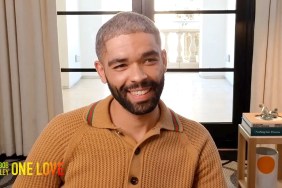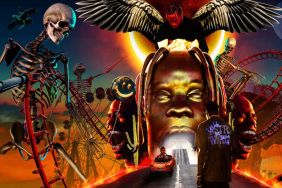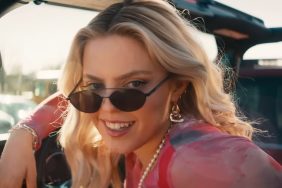
I hadn’t seen Alfred Hitchcock‘s 1945 feature Spellbound until it arrived on Blu-ray and I can understand why it isn’t one of the first films people talk about when they are listing off their favorite films from the master of suspense. Story wise, the film did little for me, but a lot of that is owed to the fact I am only seeing it for the first time now and so many films since have aped the idea of a psychiatrist falling for their potentially dangerous patient. It’s not the film’s fault I’ve seen so many other films explore this premise in my life since Spellbound first hit theaters over 65 years ago. That’s just unfortunate timing due to what may be considered a late birth.
However, that isn’t to say Spellbound is a dud, not by any measure. In fact, I came away with three specific moments that truly impressed me as Hitchcock once again proves his unique talent for toying with the audience and delivering one tense scene after another knows no bounds.
On a side note, before we go any further, included in this post are screen captures from the DVD edition, not the Blu-ray. In fact, the Blu-ray looks much better, just as was the case with Rebecca (read my thoughts on that one here). Now, let’s dig in…
in Spellbound, the ravishing Ingrid Bergman plays Dr. Constance Petersen, a by-the-book psychiatrist whose world is thrown for a loop when she takes an interest in her institution’s new chief of staff, Dr. Anthony Edwardes (Gregory Peck). As it turns out, Anthony may not be who he says he is and Constance’s involvement with him has placed her in potentially grave danger or, at the very least, painted her as an accomplice.

In the scene captured above, Anthony has grabbed a straight razor and appears to be sleep-walking. The man’s face you can see in the photo is Dr. Brulov (Michael Chekhov), Constance’s teacher and mentor, and as Anthony approaches him Brulov is able to calm him down with a glass of milk spiked with a sleeping agent. Hitchcock shows the scene from Anthony’s perspective as the glass is brought to the front of the camera and the milk slowly disappears, the scene fading away along with the built up tension, setting the audience at ease once again.

A similar first-person method is employed in another scene where a character looks down the barrel of their own gun and commits suicide. The hand in the scene is quite clearly fake, but that matters very little as the consequences of the moment take over. It’s said the scene took a week to prepare and after 19 takes Hitchcock was finally satisfied.
Unlike today, where the entire moment might have been rendered in CGI or shown from the other side so as to witness the gory results, Hitchcock uses the moment and a splash of color in the otherwise 100% black-and-white feature as the sound of the gun fires and a burst of red tint ably implies what comes next. Even without the gore-splattered wall behind the victim, we’re pretty sure they didn’t survive.

Finally, we have my favorite part of the whole film, a dream sequence conceived by Salvador Dali as Hitchcock tells Francois Truffaut called on him because he “wanted to convey the dreams with great visual sharpness and clarity, sharper than the film itself.”
Producer David O. Selznick ended up cutting the scene down from what may have been up to 22 minutes and brought in William Cameron Menzies to complete the scene as Hitchcock had nothing to do with it, but as you can see from the first screen capture from the sequence directly above, it screams Dali.

This next screen capture is also indicative of Dali as it would appear to be an homage to the short film Un Chien Andalou (watch that here) Dali made with fellow surrealist filmmaker Luis Bunuel, a film we’ve discussed more than once as of late. A scene featuring Dr. Peterson covered in ants was also conceived as part of a moment where Bergman would have been turned into a statue, but it didn’t make the final cut of the film and would have been yet another callback to Andalou.
You can watch the sequence in its brief 4 minute and 30 second entirety compared to what might have been directly to the right.
While Spellbound may not necessarily be the best film Hitchcock has given us it’s certainly nowhere near his worst. In fact I would watch it again in an instance thanks to the moments I’ve discussed here, all of which I see as signs of a true master.
As for this Blu-ray, as I already mentioned, the image is impressive as are the features, which have all been brought over from the previously released Premiere Collection which include an audio commentary, an interview with Hitchcock conducted by Peter Bogdanovich, a featurette on Hitch’s work with Dali, a 1948 radio version of the story and more.
I wouldn’t necessarily recommend this film to first time Hitchcock viewers as there are several other features to consider if you’re only beginning your exploration of the master’s work, but for those familiar with what he has to offer and looking to delve even further this film has a lot to offer, even if I don’t think I’ll ever get beyond the ridiculous skiing scene.









